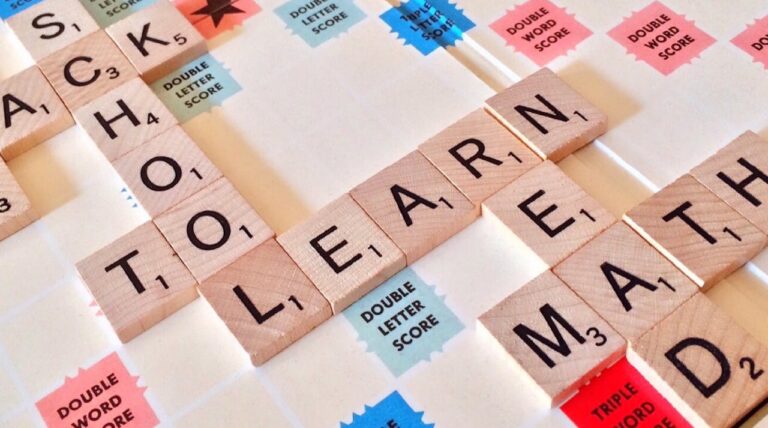Georgia Gifted Eligibility Matrix

How does the Georgia Gifted Eligibility Matrix work and what does your child need to qualify?
The Georgia Gifted Eligibility Matrix is a statewide system used to identify K–12 students for gifted programs based on cognitive ability, academic achievement, creativity, and motivation. Students can qualify through a multi-criteria model or a points-based matrix used by local districts. On this page, you’ll learn how the matrix works, what scores are required, how each area is measured, and how to help your child prepare with free practice resources.
Georgia Gifted Eligibility Matrix – Identification Process Explained
In Georgia, students are identified for gifted education programs using the Georgia Gifted Eligibility Matrix, a structured system designed to ensure fair and consistent placement across the state. The matrix is based on criteria outlined by the Georgia Department of Education (GaDOE) and is used in both grades K–12 to evaluate student aptitude, achievement, creativity, and motivation.
Whether your child is in kindergarten or high school, understanding the eligibility matrix can help you navigate the gifted identification process with confidence.
What Is the Georgia Gifted Eligibility Matrix?
The Georgia Gifted Eligibility Matrix is a points-based system used to determine a student’s eligibility for gifted and talented programs. Students are evaluated across four key areas:
-
Mental Ability (IQ or cognitive score)
-
Achievement (standardized test scores in reading or math)
-
Creativity (assessed through tests or portfolios)
-
Motivation (grades, teacher rating, or portfolio)
To qualify, students must meet eligibility criteria in one of two ways:
-
Option A – Psychometric Testing Pathway
-
Option B – Matrix Model Pathway
Option A – Psychometric Testing (Multiple-Criteria)
A student is eligible if they meet three out of the four criteria, with at least one in the 99th percentile:
| Category | Requirement |
|---|---|
| Mental Ability | 96th percentile or higher |
| Achievement | 90th percentile or higher |
| Creativity | 90th percentile or higher |
| Motivation | 90th percentile or higher (grades or rating) |
Option B – Matrix Model
Under the matrix model, points are awarded in each category. A minimum number of points (usually 12 out of 16) is required for eligibility.
Sample Matrix Table:
| Criteria | Score Range | Points Awarded |
|---|---|---|
| Mental Ability | 96–99 percentile | 3–4 points |
| Achievement | 90–99 percentile | 2–4 points |
| Creativity | Test score, product, or checklist rating | 2–4 points |
| Motivation | Grades or rating scale | 2–4 points |
Important: Points are assigned based on district-specific policies, so exact thresholds may vary slightly by school system.
How Is Each Category Measured?
1. Mental Ability
Often measured using:
-
CogAT (Cognitive Abilities Test)
-
WISC-V
-
Naglieri Nonverbal Ability Test (NNAT)
2. Achievement
Measured by standardized tests such as:
-
Iowa Assessments
-
MAP
-
Georgia Milestones
3. Creativity
Assessed through:
-
Torrance Tests of Creative Thinking
-
Creative products or performances
-
Teacher creativity checklists
4. Motivation
Determined by:
-
Grades (90 average or above in core subjects)
-
Motivation rating scales by teachers
-
Student portfolios
When and How Are Students Screened?
-
Grades K–12 are eligible for screening
-
Students are typically screened through automatic referral (high test scores) or teacher/parent nomination
-
Testing and evaluations are usually conducted during the school year, with results provided by the local district
-
Parental permission is required for testing
Free Practice for Georgia Gifted Testing
We provide free practice questions aligned with the most common assessments used in Georgia gifted screening
How Is the Score Calculated in Georgia?
Georgia identifies gifted students through two main pathways: Option A (Psychometric Testing) and Option B (Matrix Model). Both rely on standardized test scores across four key categories: mental ability, achievement, creativity, and motivation.
Option A – Psychometric Testing Pathway
Students can qualify for gifted services if they meet three of the four criteria below, with at least one score at or above the 99th percentile:
-
Mental Ability: 96th percentile or higher
-
Achievement: 90th percentile or higher in reading, math, or total battery
-
Creativity: 90th percentile or higher on a creativity assessment or checklist
-
Motivation: 90th percentile or higher (grades, motivation rating, or portfolio)
Younger students (K–2) often need a 99th percentile score in the mental ability category for direct qualification.
Option B – Matrix Model (Points-Based)
In the matrix model, students earn points in each of the four categories, and a total score is calculated. Most districts require a minimum of 12 points out of 16 to qualify for gifted placement.
Example Matrix:
| Criteria | Percentile or Rating | Points Awarded |
|---|---|---|
| Mental Ability | 96–98 percentile = 3 points 99+ = 4 points |
3–4 points |
| Achievement | 90–94 percentile = 2 points 95–99 = 3–4 points |
2–4 points |
| Creativity | Creativity test or product (rated for originality and fluency) |
2–4 points |
| Motivation | Grades or portfolio (90 average or higher) | 2–4 points |
Each district sets specific scoring rubrics, but this general structure is widely followed.
Key Score Takeaways
-
A mental ability score at or above the 96th percentile is typically required.
-
Students may qualify through either Option A or by earning 12+ points on the matrix under Option B.
-
The matrix allows multiple strengths (even if one area is slightly below the highest level) to support eligibility.
-
Motivation and creativity scores can often be demonstrated through teacher checklists, portfolios, or creative work samples.
How to Practice for the Georgia Gifted Eligibility Matrix
Preparing for Georgia’s Gifted Eligibility Matrix begins with understanding the four key areas: mental ability, achievement, creativity, and motivation. The most critical is the mental ability test, often the CogAT or NNAT. Practicing these types of questions helps students become familiar with visual patterns, analogies, and logical reasoning.
For achievement, review grade-level reading and math concepts, especially if standardized test scores are part of the evaluation. Encourage your child to read daily, solve word problems, and complete practice tests.
To develop creativity, engage your child in open-ended drawing, storytelling, or problem-solving activities. For motivation, ensure strong classroom performance and consistent grades.
Our website offers free practice tests and resources tailored to the tests used in Georgia. Even a few short sessions each week can boost your child’s confidence and help them feel prepared for every part of the gifted screening process.
Georgia Gifted Eligibility Matrix – Frequently Asked Questions (FAQ)
The Georgia Gifted Eligibility Matrix is a state-approved scoring system used to determine if a student qualifies for gifted and talented programs. It evaluates four areas: mental ability, achievement, creativity, and motivation.
Students can qualify through two pathways:
-
Option A (Psychometric Pathway): Meet three of four criteria, including at least one at the 99th percentile.
-
Option B (Matrix Model): Earn enough points across all four categories—typically 12 out of 16 or more.
Common tests include the CogAT, NNAT, or WISC-V, depending on the grade level and district.
The overall criteria are state-mandated, but local districts may vary slightly in how they assign points or accept specific assessments.
Students typically need a score in the 96th percentile or higher, and sometimes 99th percentile depending on the pathway used.
Creativity may be measured through a standardized creativity test (like Torrance), teacher checklists, or creative work samples such as drawings or writing.
Motivation can be shown through grades (usually a 90+ average), teacher evaluations, or student portfolios that show effort and commitment.






